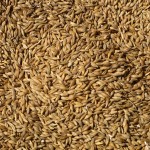 Did you ever wonder if the choices that you where making were truly “whole grain”? With more and more grain products being developed, choosing whole grains can be very confusing.
Did you ever wonder if the choices that you where making were truly “whole grain”? With more and more grain products being developed, choosing whole grains can be very confusing.
Canada’s Food Guide suggests we make at least half of our grain choices whole grain each day. By focusing on whole grain choices, we are more likely to not only meet our fibre needs but also benefit from the many nutrients they provide.
“Whole grains” and “whole grain foods” are composed of all three edible layers of the grain seed or kernel. Each layer contains specific nutrients. The outer bran layer provides all of the fibre as well as B vitamins, minerals such as magnesium, iron and zinc, phytochemicals and some protein. The middle endosperm layer contains carbohydrate and protein. The inner germ layer provides B vitamins, unsaturated fats, vitamin E, minerals and phytochemicals.
Refined grains have had the germ and the bran removed. This results in the loss of healthy fibre, vitamins and minerals. In Canada, manufacturers are required to enrich refined white flour with several vitamins and iron. Enriched flour still lacks some nutrients and fibre that is found in whole grain flour.
It is also important to know that in Canada, when wheat is milled to make flour, the three parts of the grain are usually separated and then recombined to make specific types of flour, such as whole wheat, whole grain and all purpose flour. Whole wheat flour is not necessarily whole grain. Whole wheat flour may have some of the bran and some of the germ removed to improve shelf life.
Some examples of whole grains include amaranth, brown rice, buckwheat, bulgur, millet, pot barley, quinoa, spelt, triticale, whole oats or oatmeal, whole rye, whole grain wheat and wild rice.
Here are a few meal ideas that include whole grains:
- § Start your day with a bowl of oatmeal or whole grain cereal.
- § Try using brown rice in recipes that call for white rice.
- § Bulgur cooks in less than 15 minutes and makes a great salad.
- § Barley can be used in soups and stews.
- § Pancakes and muffins can be made using buckwheat flour.
- § Look at the ingredient list rather than the colour of a food when you choose whole grain foods. Some brown bread is simply white bread coloured with molasses. Remember the first ingredient should be a whole grain, such as whole grain wheat.
- § Do not be fooled by multigrain products, which may include a variety of different grains but may not include the whole grain.
- § Although whole wheat flour, bread and pasta may not be whole grain, they are still nutritious choices that provide dietary fibre not found in white flour, bread and pasta.
For more information about different whole grains go to www.eatrightontario.ca and type “cooking with whole grains” in the search menu.
WRITTEN BY THE PUBLIC HEALTH NUTRITIONISTS OF SASKATCHEWAN
Adapted from: “Our Daily Bread”, Nutrition Matters column November 26, 2006 (Lisa Vance)
Originator: Alison Amundrud, Kelsey Trail Health Region
Editing Buddy: Shari Tremaine, Five Hills Health Region
References:
“Choosing Whole Grains FAQs”, www.eatrightontario.ca/.
Eating Well With Canada’s Food Guide: A Resource For Educators and Communicators, 2007.
Health Canada, “Whole Grains – Get the Facts”, www.hc-sc.gc.ca/.






